Fashion Editor is the most popular job in fashion along with that of a designer. We’ve seen them in iconic movies and TV shows like The Devil Wears Prada and The Bold Type, showing the dream life we wished we could have too in real life.
Most renowned fashion editors are based in prestigious magazines in New York, Milan, London, and Paris. They are the creative minds behind the great articles we read in Vogue and Co. Also, they style looks for captivating editorials and fashion spreads, and they travel the world to attend fashion shows.
From the outside, it seems like a very glamorous role, but despite all the perks, it takes a lot to become a fashion editor. Your career won’t start with directing a photoshoot or attending a fancy event but rather an editorial internship where you help organize the magazine’s cupboard. Yes, fashion editor is not an entry-level role and you will need to start with an internship. It may therefore sound like too big of a dream today because you don’t have experience yet. But I am here to give you tips to make it happen and prepare you to become a fashion editor.
In this article, we will introduce you to the role of a fashion editor explaining the responsibilities, answer the questions about what you need to study, the skills needed, where to find fashion editor jobs, and how to build your application.
How To Become A Fashion Editor
Who Is A Fashion Editor
Fashion editors work in magazines. Their role is often interchangeable with that of a fashion writer but you should know their duties include more than just writing articles. A fashion editor is in fact a fashion writer + stylist.
Fashion editors are responsible for deciding what goes on the magazine’s fashion pages. From selecting this season’s staples to put on the product pages to which articles to feature or what photo shoots to include in editorials. They are ultimately responsible for the whole fashion sector of a magazine. Whether this is digital content to choose from or organizing the layout of a shopping page in the physical magazine.
Some fashion editors do more styling, and others do more writing. This is more of a personal choice or depends on the magazine.
Fashion editors can work as freelancers or be employed by a magazine. Freelance fashion editors can have multiple clients and therefore work with different magazines at the same time. They get paid for the project. Employed fashion editors instead, work full-time at one magazine.
How to get started as a fashion editor
What to study to become a fashion editor
First, let’s clear out one important detail: you don’t need to study fashion to work at a fashion magazine as an editor. You may think that studying fashion makes you more accountable to hold the title of a fashion editor. However, in reality, it’s about so much more than fashion, style, and trends.
An editor is, first of all, a person with a rich culture and knowledge; they have to be experts in different topics. Yes, you could be assigned a particular niche, like being a beauty editor or features editor, but in general, no matter your niche, you need to be curious and read a lot about one or several topics to have ideas to write about, develop your vocabulary, cross-cutting dates and compare how a fashion movement has evolved over time, etc. And it goes without saying that an editor-in-chief needs to be an expert in a little bit of everything.
More than 90% of people who work in the industry, including editors, didn’t attend a fashion school. They hold traditional degrees in journalism, communication and PR, marketing, art history and visual arts, etc.
If you studied something else, it’s fine because you acquired transferable skills in other roles or industries that can you apply to the role of a fashion editor.
You can learn more about what to study to become a fashion editor in this article.
Skills Needed To Become A Fashion Editor
Practice your writing skills
Of course, your writing skills must be on point. Not all editors write the same. Some write as they speak, using the first person, especially when writing for online and digital publications. Here, the reader spends less time consuming an article so texts are shorter and more digestible. Others use a more picturesque language (have you ever read an article by Angelo Flaccavento on Vogue Italia or BOF? ). There are different writing styles. So, just because you don’t write like your favorite fashion editors, it doesn’t mean you are not a good writer.
The beauty of writing is that it’s made of different shades.
It’s important to read what and how the other editors are writing. However, it’s fundamental to have your unique voice and build your writing style. The most famous fashion journalists have a strong writing style that you can recognize their pieces even before reading who the author of that article is. Developing your own writing style is something that you’ll practice with time. But it’s important to start considering it now if this is the career of your dreams. Furthermore, the digital space has brought more opportunities and different ways of creating stories breaking down some old-fashioned journalism barriers (just think of fashion blogs and anyone can write a fashion story today.)
While your own writing style is something that you will develop with time, something you need from the very beginning is perfect grammar. Your grammar must be on point from the very first moment you decide to write an article. No one will ever publish an article that has a grammar or spelling mistake. This is super important.
It’s not a problem if you are not writing the most interesting article of the week. However, everyone will remember your grammar mistakes. So, make sure you proofread all your articles the following day or some hours after your first draft to make sure it’s on point. You’ll get better with practice so write something every single day to train your writing skills.
If you dream of a career as a fashion editor or journalist, your writing skills are definitely crucial but they are not the only thing you need if you want to become a successful fashion editor.
While you might believe that fashion editors spend their days writing articles, you should know that there is a lot more behind an article than just typing words.
If you think about it, an article is made of different components. First is generating the idea first, the images that go with it, the interviews, opinions, or comments if there are, the research part. And there could also be the part where you manually upload the article on the website and hit publish.
That’s why if you want to become a fashion editor there are other skills you should consider and train.
Whether you are just at the beginning of your career, an intern, a student, a freelance, or with some experience already, these are the skills you need to be a fashion editor.
Develop your research skills
Fashion publications are looking for fresh and new ideas every single day. Especially fashion websites that publish lots of stories on a daily basis. You need to develop your research skills to work as a fashion editor both to find new ideas and to research the topic you will write about. Finding ideas is a critical part of your job, otherwise you won’t have anything to write about. You can find ideas anywhere. Get inspiration from on social media, by reading other articles, looking at what’s happening in the industry, or talking to people. When generating your ideas, you have to think about the lead time. It’s an industry term that considers when the article is going to be published.
The lead time depends on the publication whether it’s a monthly, weekly, or newspaper or if it’s a blog or website that gets updated daily. For the monthly issue of Vogue, for example, lead time is on average 6 weeks – 3 months. With digital publications, this can go from a couple of hours (see fashion news or runway reports) to the day before or one week in advance. So, when you are searching for ideas for an article, you need to consider when this is going to be published to make sure it’s relevant at that specific moment.
Practice your pitching skills
After having generated your ideas, you need to propose them to someone. Whether you are a freelancer selling your stories to publications or you are employed at a fashion magazine there is always the pitching part.
If you are a freelancer, you have to be great at pitching, meaning proposing. Also, selling your stories to the different fashion magazines you want to write for. Pitching as a freelance writer is vital. The more you pitch, the more stories you’ll get published and so the more money you make.
Likewise, when you are working for a fashion magazine, a part of your job is to pitch your article ideas during the editorial meetings. These meetings happen daily or weekly according to the company. Most fashion editors are not waiting for their stories to get commissioned by the managing editors. They are pitching their own. Even when you are just an assistant or intern, if you want to become an editor you need to bring fresh ideas to your editors. The more you pitch, the better you become at your job and the more stories will be assigned to you (hello promotion!).
Gain fashion industry knowledge
You can’t write about fashion without knowing fashion. And just to be clear, knowing about fashion doesn’t mean only staying up with fashion trends, watching fashion shows, and looking at the latest collections of your favorite fashion brands. You need to learn how the fashion industry works, who are the key players and its history. Great articles reference past events or recent news and your only way to connect the dots between different stories, examples, or case studies is knowing about the industry. So take a fashion history course, read books, and stay up to date every single day with the latest news in the industry. Reading is a key component of a fashion editor’s career. Don’t just read about fashion though. It’s important to know what’s happening in the world so you can make your writing more relatable to real life.
Learn SEO
SEO stands for search engine optimization. It’s the tool that if set up correctly puts your article on top of the search results when people google specific keywords. So for example, if you type on Google: “best shoes of 2022” ideally the first article that should appear on top of the search results is yours.
Doing SEO correctly is fundamental for fashion publications to drive traffic. The more people are going to find your content, the more readers. SEO is probably the techiest part of the job of a fashion editor but it’s not so difficult to learn. It’s enough to follow some rules when writing the articles, for example adding your keywords and links and using the correct tags for your images.
Practice your networking skills
A great fashion editor builds up their contacts. Whether they are people in the industry to ask for their opinion for a feature or PRs to talk about the latest product or other editors if you are a freelancer and you want to publish for that magazine, building your own database of contacts it’s part of the job. These relationships can all be built online. So even if you are not living in a fashion capital, you are working remotely as a freelancer or you are an introvert, you can start building the connections you need via LinkedIn and Instagram.
On these two platforms you can find people you want to connect with according to your goal: an interview, asking for an opinion for your next article, pitching your article idea if you are a freelancer…start following them all on Instagram, connect with them on LinkedIn and build an Excel sheet with a database to keep track of their email addresses.
Learn WordPress, Photoshop, Google Analytics
With most of the fashion publications being online nowadays, it definitely helps to add to your skillset also some tech tools. It can happen that the editors ask you to resize an image. So it’s best to have a basic knowledge of Photoshop. Or your boss might ask you to upload the article directly on WordPress and publish it on the website. Or you might want to become familiar with Google Analytics to see what the most read articles are so you can start writing more about what people love reading. You can start your own fashion blog to practice with WordPress and Google Analytics by looking at the stats of your own fashion website.
Learn about styling
Some fashion editors are more stylists than writers. It’s up to you to decide whether you want to either write and style, focus on styling more, or write more. If you want styling to be part of your job then you’ll also need styling among your skillset. However, as any stylist says, styling is about taste, which is something that you have innate. You can learn what’s involved and how to organize a shoot, but your styling sense can’t be taught, it’s more talent than a skill. Styling is not just about putting an outfit together. It’s more about building a story, especially when you are doing an editorial styling job which is all the styling done for magazines.
If you are at the beginning of your career you might just assist the stylist or at the most basic level chose the clothes and accessories for the shoots. But when you are more senior, styling includes lots of organization, calling in clothes, casting, production, directing the shooting…
Editor jobs and internships at fashion magazines
In order to become a fashion editor, you will need to start with an internship at a fashion magazine first. Like I said, a fashion editor position is not an entry-level role. If you are a student, recent graduate, or just someone with no or little experience, your career path toward the job as a fashion editor should begin with an internship.
After the internship, you will make your way up to the editor’s assistant (not an internship, but a job this time). And only after a couple of years you can expect to become an editor, and eventually an editor-in-chief.
Let’s look at the internship options that will prepare you for the role of the fashion editor.
Editorial internships at fashion magazines
An internship at the magazine’s editorial department is a good start to becoming a fashion editor. As an editorial assistant, you will ensure the successful flow of the magazine and assist where possible with design, writing, scheduling photo shoots, or arranging meetings.
You can also choose to become an assistant to a specific fashion or beauty editor, serving as their trusted confidant and assisting them with different tasks to make their life easier. Your duties as an assistant to the editor can include assisting them in shoots by calling clothes in from PR, keeping notes of all the credits needed in the magazine shopping pages, writing articles for these sectors of the magazine, and so on.
If you don’t find an internship in the editorial department, you might consider opting for a more generic role as a fashion intern at a magazine. Many fashion enthusiasts start as fashion interns at magazines. They usually work in the fashion cupboard helping to organize everything and assist editors on set. You will act as a PA to help with time-consuming tasks or research projects to help things run quickly and smoothly. You may also produce content and get to pitch ideas for feedback and get your name published.
Styling internships at fashion magazines
As we said in the beginning, the job of a fashion editor includes a big portion of styling. Therefore, when you become a fashion editorial intern, you will likely be asked to assist editors at photoshoots, picking the looks from the cupboard to be used in editorials, making suggestions on which items to select for fashion spreads, and so on. Stylist interns at magazines are expected to have a keen eye for trends to pick looks that will be relevant in the magazine in a particular season and a strong attention to detail.
Freelance fashion editor jobs
If you are interested in writing for fashion magazines, you should know there are few full-time staff writer positions. Most fashion writers work as freelancers. They thus have the liberty to contribute to different publications and need to send them their pitches to get their articles published.
Working as a freelance writer gives you experience that can later open doors for you to continue your career at magazines as a fashion editor. Therefore, I recommend exploring this option, especially if you enjoy writing and are looking for a remote fashion job.
Where to find editor jobs and internships at fashion magazines
Here is a reality of fashion magazines you should know: they rarely post job offers online. I still recommend checking regularly the career pages of Condé Nast and Hearst, which own many famous titles, and LinkedIn. However, you should pair this traditional job search with another strategy to get an internship or job at Vogue, Elle, Marie Claire, or other publications.
My favorite strategy to get an internship at a magazine (and this applies to that of a fashion editor as well) is to send a cold email to an editor asking for an internship opportunity. You can find all the editors working at magazines on the masthead page of their print issues and on LinkedIn. Reaching out to them directly is the fastest way to secure an internship. What’s more, you will appear as someone proactive – a valuable quality in any job in fashion.
I teach how to cold email brands in my free webinar.
How to build a CV to become a fashion editor
Now that we’ve seen the different paths to becoming a fashion editor when you are a beginner, let’s see how to build your application.
When you start in the industry, you can compensate for your lack of experience by crafting a compelling fashion resume. Your resume for the position of fashion editorial or styling assistant should ideally include the skills mentioned above. These include knowledge of WordPress, Photoshop, SEO, and styling, among others. If you don’t have basic knowledge of those, make sure to start learning them. Do this before you land an internship at the magazine.
You can also make your CV stand out. Mention relevant (online) fashion and writing courses you took in the past.
If you think you think you don’t have any experience at all, think again. Perhaps you had a part-time student job as a sales assistant where you were unpacking clothes and styling looks on the racks and window displays? Or you had any other job or internship where you developed skills that may be useful for the internship at the editorial department? Maybe you did a personal project, or freelanced in your spare time? If so, analyze which skills you could transfer to your dream role as a fashion editor. Then, add them as bullet points under your previous work experiences and the skills section.
If you don’t have any experience, fear not because it’s not required for an internship.
How to build a Portfolio as an aspiring fashion editor
Besides your CV, what’s even more important for an aspiring fashion editor is your portfolio.
A portfolio can be built by anyone even if you don’t have experience. You can build a sample project just for the sake of building a portfolio.
Imagine you are in charge of the editorial shoot of Vogue. Create the concept of the photoshoot. Select the venue, and the models, and curate the looks for the models. Also, build a mood board with the inspiration behind the shooting.
In addition, to showcase that you have not only great styling but also writing skills, include in your portfolio a few sample articles. These articles can be on any relevant topic to the magazine you are applying to. It can be a news, a runway review, or an in-depth article about a topic. Your articles don’t necessarily have to be previously published anywhere. Any piece you wrote for yourself will work to demonstrate your writing skills.
Need more tips to start your career as a fashion editor or writer? Check out my online course The Fashion Writer Accelerator. You can also register to my free webinar to get a glimpse into my teaching style.

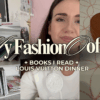

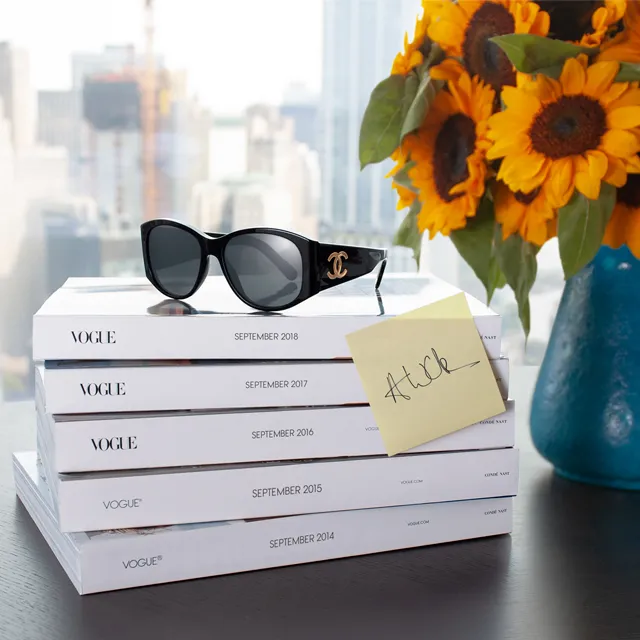
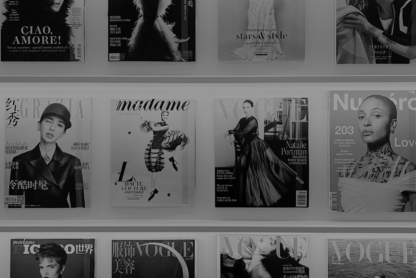
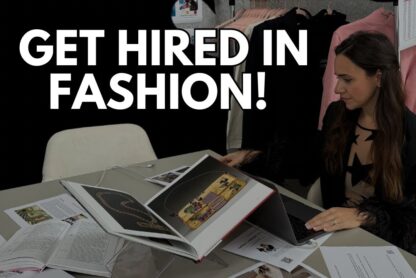
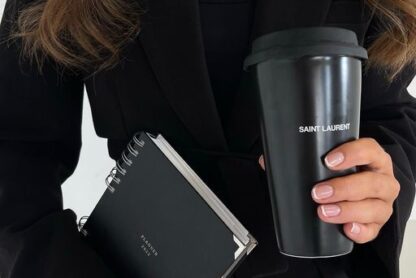
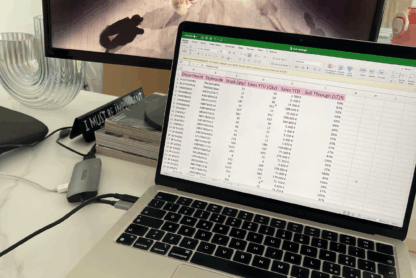
Bring an MBA in marketing, I have a few years of experience in affiliate marketing and entrepreneurship. But, I have always had a great knack for writing. Hence I would want to explore the experience of writing for vogue. Waiting in anticipation. Thanks